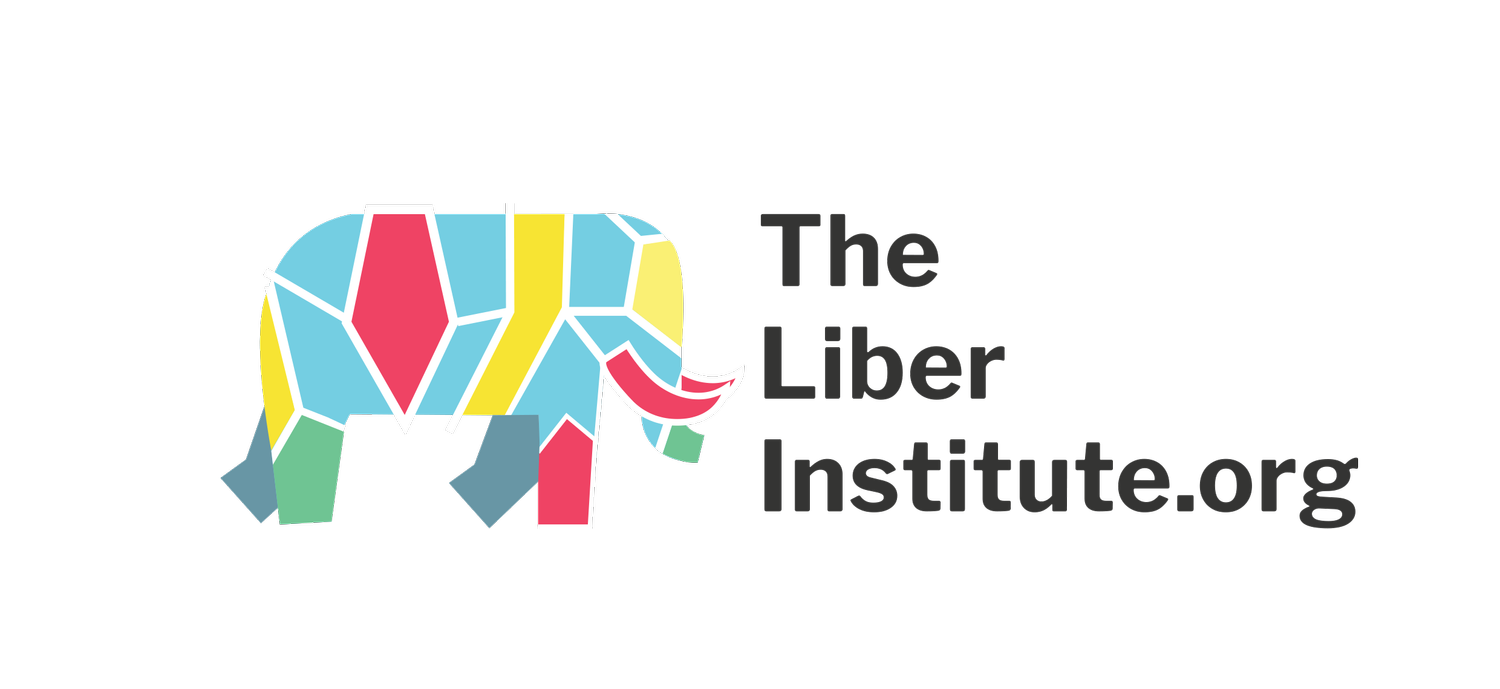The Elephant
A 5-Minute Interview with Jonathan
by Amanda Dahlin
As promised, this interview dives into the elephant image we’ve grown to love at The Liber Institute. In “Why Liber?” Jonathan shared how he discussed his care to accurately portray The Liber Institute as a good relative, not an Indigenous organization. As the Founder, he acknowledged his trek across lines of difference to support relatives, just as they supported him when he first moved to Kyle, SD.
Amanda: When I visited South Dakota, the animal I needed to see was the buffalo. Seeing them on their land was unlike anything I’d ever experienced. Why isn’t our symbol a buffalo?
Jonathan: One of the most amazing creatures I’ve encountered is the buffalo. Previously on the brink of extinction, this species has always served Indigenous people spiritually and practically. The buffalo is a source of strength and hope, a sacred species that I could never, in good conscience, commoditize.
I needed to choose something that spoke to me on a similar level. Something that inspires liberation, strength, and connection.
A: And how does the elephant inspire those things?
J: Domestication of the elephant is a story akin to slavery. To control such a powerful animal, you must capture a calf and shackle her. As the calf grows, pulling against the shackle, she endures the chafing and cutting of metal against her flesh. She struggles with the chains, never finding a break in the links, and one day she realizes resistance is futile. One day she chooses to submit to captivity - to the chain and shackle - instead of continuing her fruitless fight.
At that point, in her submissive state, she can be trained and learns a false sense of trust and loyalty to her captor. As she grows, she doesn’t realize her strength as one of the most powerful creatures on land and is subdued with a rope and a simple knot. Any resistance she feels around her ankle will remind her of her past, and her trauma wins. She’ll stop pulling and ignore a desire to flee because she is conditioned to believe that resistance is futile.
This idea is that long after the shackle is strong enough to keep that elephant in captivity, she will resign herself to it because she was conditioned to it for so long. Until she realizes those ideas, those restraints no longer apply until she realizes, “I am the most powerful creature on earth; this will not hold me,” she will remain obedient to her captor.
That’s Us.
I realized that’s us; to me, my Black community, and so many other marginalized communities. The idea of the “elephant in the room” is our power, shackled and submissive. We don’t realize how powerful we are because we’ve been conditioned to believe otherwise, to believe the lies of inferiority, of weakness.
Historically, Black folks have been told, “we don’t know” or “negroes can’t do.” When we prove otherwise, it’s snatched away. I think of the Tulsa Race Massacre and the destruction of Black Wall Street, the Reconstruction Era when Black people fought in the Civil War and then had to fight for citizenship.
I also think of my Indigenous relatives who were forced off their land and repeatedly moved further and further west whenever European settlers coveted fertile land. I think of my relatives who prevailed against the odds, becoming farmers and ranchers in new American ways and still being stripped of their assets.
We get to the point of frustration, anger, and submission in the “land of opportunity.” Historically, that’s only true for certain people; those opportunities are not offered to us, the elephants in the room.
A: Any last thoughts?
J: When our young people, families, educators, and organizations seek partnership, we realize we are the elephant in the room. We break the shackles and begin to set a vision and dictate for ourselves. We build paths toward better schools, healthier communities, and stronger individuals.
Our role is not to make elephants; the elephant is the community. We’re here to honor the collective power and vision of the community; we’re here to help them remember.
When choosing this organization’s name and symbol, time, education, and patience all played a part in finding the right fit. In future posts, we’ll explore how our team members embody these values in their work.

